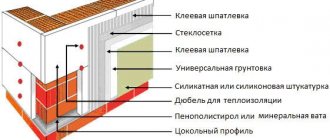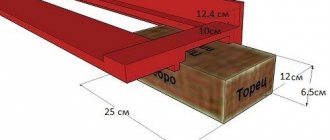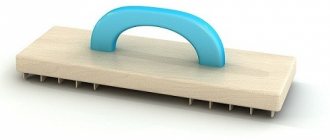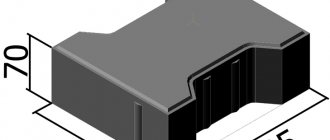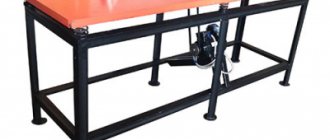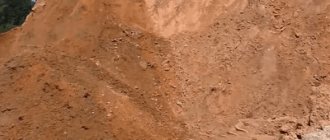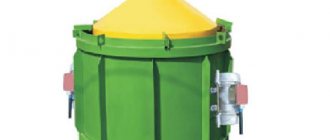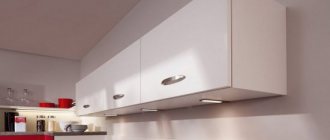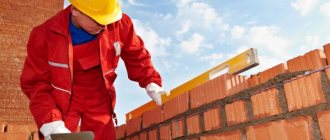For construction today, lightweight concrete with a cellular structure (aerated concrete) is often used. Naturally, when laying corners and carrying out some other operations, the need arises to adjust the material. To quickly and efficiently perform these actions, you will need a saw for aerated concrete blocks.
How to decide on the type of tool
The choice of saw should be approached based on specific tasks: how intensively the device will be used, what it is intended to work with. In order not to make a mistake, you also need to focus on the type of power supply, power, cutting speed, and the amount of blade stroke. It is worth paying attention to the packaging and the presence of additional functions.
The most common option is a reciprocating saw with a cutting component made of hardened cutters and special pobedit tips. It is ideally suited for working with gas block. The teeth can be made of metal-ceramic carbide alloy, which includes monocarbide, tungsten and cobalt; they are load-resistant. Such a power saw will have good wear resistance.
Depending on the equipment, professional and household saws are distinguished. Both options are divided into electric and battery-powered. A device with a cutting element length from 28 to 32 mm is considered optimal for working with gas blocks and the most universal.
How to cut aerated concrete blocks
The electric saw has great power and high performance. But its coverage area is limited by the length of the cord. But you can always find a way out of this situation. Rechargeable – more mobile and lighter. Despite the lower power and the fact that the battery discharges quickly, cutting aerated concrete can be carried out immediately on the construction site. Its advantages: it is easy to cut gas blocks in hard-to-reach places and in limited space.
Both cordless and electric saws have an undeniable advantage over a gas block hacksaw: they save time and effort, increase the quality and productivity of work. Household tools are not intended for frequent use. Saws with low power are presented in a wide range on the market in different price categories, on average from 2,000 rubles.
A professional saw can be used daily and continuously for 6 hours or more; it has a solid working life and power. Accordingly, its prices are higher. For example, the alligator DeWalt DWE 397c 1700 W costs over 27,000 rubles. Saw Bosch GSA 36 V-Li - about 40,000 rubles.
A reciprocating saw for gas blocks has many advantages:
- power (the higher it is, the easier it is to process aerated concrete). It varies from 400 to 1600 W;
- durability;
- ease of maintenance;
- versatility.
The Bosch brand is one of the leaders in the production of reciprocating devices. Their models are available with speed control functions. Often the kit includes a system for safe use, anti-vibration protection; There is a possibility of keyless replacement of blades.
The design of the device resembles a regular hacksaw, which is used to process wood. However, it differs in the thickness of the canvas. Kinds:
The device is a machine for cutting various materials using a closed metal strip, for the manufacture of which high-tech alloys are used. A big plus is the ability to adjust the height and excellent performance. The cutting element is a strip blade, which allows for longitudinal and figured sawing.
The cost of a fairly common saw BISON ZPL-350-190 is 10,890 rubles. From 100,000 to 300,000 rubles is the price range for professional equipment for large volumes of work.
Reciprocating saw blades for aerated concrete
The ergonomics and capabilities of the tool depend on such an important component as the saw blade. More precisely from him:
- material;
- width. The most common options are from 19 to 22 mm;
- working length. The indicator affects both the permissible dimensions of the workpiece and the rigidity of the canvas itself;
- thickness;
- pitch of teeth, which differ in number, frequency, height level.
Depending on the change in the size and frequency of the location of the incisors, the methods of using a particular blade are distinguished:
- with large ones - to perform high-speed actions;
- with small ones - for figured sawing;
- with a frequent arrangement of teeth, cutting of aerated concrete is carried out more efficiently.
- with set teeth - the speed of work increases, but the cut is rough;
considered one of the most popular on the Russian market. Thanks to carbide tips on each tooth and the length of the blade, the saw is able to easily cut gas blocks both longitudinally and transversely.
To avoid mistakes when working with a saw, you should use additional devices offered by manufacturers. As a rule, they are not included in the general package, so you will have to buy them separately.
1. Blade stroke limiter.
Makes it possible to press the saw against the gas block when cutting, which makes the work easier. The quality, accuracy and speed of cutting increases. You can shift the position of the stop along the axis forward and backward, thereby providing the necessary step when cutting the block.
2. Pendulum system.
With its help, the cutting speed increases, dust-like waste is easier to remove from the working space, the service life of the blade is extended, and the load on the hand is reduced. This option is not available on all models. Some modern saws (Makita JR 3070 CT, Hitachi CR 13 VA) have a pendulum control.
Average prices for blades for reciprocating and band saws from popular manufacturers (you can buy them both in hardware stores and in online markets) are shown in the table below.
Aerated concrete blocks can be perfectly processed with almost any tool. They can be cut with a power tool or processed manually, which makes it possible to produce parts of any geometry with inclined, oblique, or curly edges.
Band-saw
The tool is a multi-cutter cutting machine. The cutting is carried out with a circular steel strip, on one side having teeth. Band saw performance is high. Thus, using a machine, you can cut foam concrete 20 times faster compared to a manual hacksaw.
Read also: Structural steel what is it
A high-tech alloy of hard metals is used for the guide blade. The machine is indispensable in the construction of large objects. With a band saw you can cut blocks of any width, as the height is adjustable. The big advantage is that this saw does an excellent job with foam and aerated concrete of any type, regardless of whether it is autoclaved or natural.
There are models that cut straight and diagonally. The machine can be equipped with an automated self-tensioning function, which affects the cutting accuracy of concrete blocks. Guide rollers allow you to increase the working life of the band saw, and the gaps in the cutting blade, with the help of which waste is removed, ensure non-stop operation.
The band saw is equipped with eyes and wheels, which makes it possible to transport it. Additional stops in the machine contribute to stability during operation. There is also a dust extraction system, which immediately absorbs all the dust when the machine is operating.
What to consider when choosing?
As for hand tools, the best option for processing aerated concrete would be a model with teeth equipped with Pobedit tips. Its high cost may well be justified by the high strength of the tool. This will not affect the cutting time (it will be quite long), but the safety of the material and cutting accuracy will be higher. It is better to cut large blocks using a two-handed tool, but its weight is much greater - you will need a partner.
It is preferable to use products from a well-known company rather than purchasing a homemade tool with questionable workmanship. The company has proven itself to be excellent. Delta brand products are also a good economical option. Using a hand hacksaw, neat cuts are made and window or door openings are formed. The disadvantage of such a tool is that it has to be cut at a low speed.
When purchasing a power saw, you need to pay special attention to its characteristics. The power of household models is relatively low; overheating can occur in less than half an hour and they will have to be turned off periodically. They cost about two to three thousand rubles, while the cost of a professional saw can exceed this amount by 10 times.
But a tool of this class is designed for a daily work schedule that involves continuous work. In this mode, the saw can operate for more than 5 hours in a row. Their power ranges from 500 to 1500 W.
According to the type of drive, the tool is divided into:
- corded, more powerful and productive, but not so mobile (you will have to use an extension cord);
- battery-powered (an electric hacksaw is lighter and is used to process aerated concrete on construction sites).
Additionally, it can be noted that there are functions such as adjusting speeds and replacing blades without using keys. It’s nice if the reciprocating saw has anti-vibration protection.
When purchasing consumables for electric hacksaws, you need to pay attention to the type of cutting tooth. The size of the teeth and the spacing between them indicate where they should be used. For example, equipment with a large cutter is used for high-speed cutting, and with a small one - for figured cuts. The smallest tooth spacing gives ideal cutting planes, and with a large set the cutting time is reduced, but this is inevitably accompanied by a loss of quality.
Types of equipment
All equipment for the production of aerated concrete blocks can be divided into 4 groups:
- conveyor lines;
- fixed lines;
- mini lines;
- mobile installations.
Their main difference is performance. To accommodate them, production areas of different sizes are required.
Stationary lines are well automated, which allows to significantly reduce the use of manual labor, as well as obtain products of very high quality. Productivity ranges from 60 m³ per day or more. To ensure smooth operation of the plant, only two people are needed per shift.
To place such a mini-factory along with warehouses for raw materials and finished products, about 500 m² of production and storage space will be required. Therefore, starting a business will require quite large expenses at the initial stage, primarily for the purchase of equipment and rental of space. Costs for equipment alone will range from 300,000 to 1.5 million rubles or more, depending on its performance.
You can significantly reduce initial costs by giving preference to mini-lines , the productivity of which is about 15 m³ of product per day . Their main difference from stationary ones, in addition to the size and level of automation, lies in the principle of operation of the equipment .
In stationary complexes, the fixed element is the mixer , and in mini-lines, forms for blocks, that is, in the first case, the forms themselves drive up to the mixer to fill them with the prepared solution, and in the second case, vice versa.
Therefore, you can also save on renting space for production: to accommodate a mini-line with a productivity of 15 m³ per day, you will need only 140-160 m². But servicing this installation will also require at least 2 workers, since the level of automation is much lower. Mini-lines can be used to produce aerated concrete directly on a construction site, but this will require a source of electricity.
Conveyor lines can produce from 120-150 m³ per day, while achieving maximum automation of the process and reducing the number of hired workers. The equipment, located on an area of 600 m², can be serviced by only 8 people. Naturally, large investments will be required at the initial stage, but with good market conditions and established sales, the payback of such a line can occur in just a year, although the cost of equipment will range from 2-5 million rubles or more, depending on its productivity.
mobile installations for the production of aerated blocks when, for example, a country residential complex or a cottage is to be built. In this case, you can significantly reduce costs . On average, construction costs can be reduced by 30%. In order to achieve high quality products, the mixer is additionally equipped with a compressor unit , which ensures better production of the solution.
As a rule, all mobile installations are designed to operate from a regular power supply with a voltage of 220 V, instead of a three-phase connection of 360 V for other types of equipment. Its placement does not require much space on the construction site ; such equipment can even be placed under a canopy. The cost of such an installation for the production of gas blocks starts from 25,000-40,000 rubles .
How to cut correctly?
Hacksaw
In the case when the designs of houses or other buildings being built do not imply that they will have complex geometric shapes, purchasing expensive power tools is pointless. Using a regular hacksaw is sufficient. It is used to process small volume material. The quality and speed of cutting are influenced by technical, strength, and density factors of the material, as well as the level of temperature and humidity of the air.
Attention! It is better to saw dry blocks in warm conditions. If the gas block absorbs moisture from the surrounding air or gets wet for other reasons, the hacksaw blade may get stuck during sawing.
Let's consider the direct cutting process.
- To get a straight line you will need a pencil and a square. On aerated concrete, markings are applied along each of the four edges. Then cuts are made to a depth of 1-4 cm along two long edges and one short one. The hand tool must have a blade of sufficient length to reach the end of the cut and clear the passage of sawdust.
- The canvas is guided without excessive pressure so that there is no deviation from the marking line. The optimal cutting angle is 45°. It is necessary to ensure that the sawn part does not fall when the cut is completed. Also, to avoid chipping, a reliable stand or corner is needed.
With pre-made cuts, the tool will remain on the cutting line, which will make cutting easier and more efficient. It takes an average of 5-7 minutes to saw one aerated concrete block of the usual standard 400x250 mm with a density of D500 using a hand saw. When constructing large buildings, the time required to prepare the material will be significant.
Reciprocating saw
Reciprocating saws are power tools that look like powerful jigsaws. Structurally, a reciprocating saw consists of the tool itself and a casing. Using a reciprocating saw, you can cut both in a straight line and perform a so-called reciprocating cut. The saw cuts through the aerated concrete block using flat cutting blades that look a bit like cavalry sabers. The blade moves rotationally and translationally, the required speed mode is set using an electronic unit. Saw models are distinguished by motor power and working blade lengths. The amplitude of vibration of the reciprocating saw blade varies from 2 to 5 cm, the frequency of movement can reach up to 3000 strokes per minute. Worn fabric can be easily replaced with a new one.
All modifications are equipped with heat removal systems. The reciprocating saw is distinguished by excellent cutting accuracy, high efficiency, it can change the level of cutting depth, and it is possible to adjust the blocks to the required dimensions. With its help, partial cutting of aerated concrete for wiring is possible. The disadvantage is that the instrument is expensive. If you plan to work with aerated concrete, then specialized blades will be required.
Chain
Electric chain saws are considered universal products, since almost every household has such a tool. The saw consists of a cutting chain, a saw bar, a tension mechanism, a lubrication system, and a motor-blocking shield. For optimal operation of the saw, it is necessary to adjust the chain tension using a special bar screw.
Advantages of operation: most professionals consider the best option to use chain saws when cutting U-configuration gas blocks. When sawing from the end, you can get the ideal shape of a horizontal cut. The chain saw provides high sawing speed. It is also necessary to note the optimal weight balancing: the chain saw is convenient to use when cutting at different angles and, if necessary, hold it above your head.
A significant disadvantage of electric saws is the relatively quick dulling of the chain when cutting aerated concrete, since the direct purpose of the saw is cutting wood. For this reason, when purchasing a saw, it is recommended to purchase chains with pobedit soldering. Of course, such a chain costs much more than an ordinary one, but in any case it will have to be sharpened someday.
When sawing two or three blocks in a row, the chain heats up and the metal expands, which leads to its stretching. To eliminate this problem, it is necessary to remove one link, then it will correspond to its previous parameters. For this reason, there are strong recommendations on the operating mode - the instrument must rest. If you work in difficult environments (for example, cutting aerated concrete blocks instead of cutting tree trunks), the electric saw sprocket grinds down its teeth.
It should be noted that all models of electric motors in chain saws do not tolerate dust, one way or another, generated during the process of sawing aerated concrete. As a result, the saw is broken and it is unlikely that they will be able to restore it (unless they change the engine).
Alligator type electric saw
Uninformed people often perceive this option as a variation of the saber type, but they are different. When the “Alligator” operates, the planes of the canvases are brought into sliding. They move in the same way as the movements of crocodile jaws. They do not go back and forth, like their reciprocating counterparts; cutting occurs due to the saw bar, which is fixedly installed.
Features of aerated concrete production technology
The manufacturing process before autoclaving begins consists of the following steps:
- Prepare and dose all components except the blowing agent and mix them thoroughly in mixers for 5 minutes.
- Adding aluminum powder and final mixing – 1 min.
- Pouring the resulting liquid mixture into pre-prepared molds: from 1/3 to 2/3 of their volume. No more than 20 minutes are allocated for this stage.
- Exposure in molds: from 2 to 4 hours until the end of the gas formation process.
- Removing molds, trimming excess with string cutting tools, and, if appropriate equipment is available, making groove holes.
Further steps depend on the possibility of autoclaving. When produced at home (or close to it), the blocks are simply kept on pallets for at least two days at an ambient temperature of +20 °C, then another 21-28 days at normal humidity. After a month, such products are ready for use, inferior in strength to factory ones, they are quite suitable as insulation or for filling the space between rigid frames. Their performance characteristics directly depend on the activity and proportion of binder.
The main material for the manufacture of structural blocks is autoclaved aerated concrete. In this case, the cut blanks are placed in special chambers and treated with hot steam under high pressure. Approximate parameters of the environment inside the autoclave: +200 °C, at least 10 atm; it is impossible to achieve them at home without the appropriate equipment. During the processing, the cell walls are strengthened and gas formation is successfully completed, as a result, the blocks improve their insulating and strength properties. Autoclaved aerated concrete can withstand moisture loads better and has higher frost resistance.
This technology increases the cost of the units even when purchasing used heat treatment equipment: it is most often stationary, requires a reliable foundation and the inclusion of a boiler to generate steam into the production scheme. In order to save money, many entrepreneurs first launch a production line for non-autoclaved gas blocks, with plans to install an autoclave in the future. This step can be avoided when molding products intended for thermal insulation.
How to saw with a hacksaw
If the design of a house or other structure being built does not involve complex geometric shapes, then there is no point in purchasing an expensive power tool.
This tool is used for processing small volumes of masonry.
The quality of the cut is influenced by:
- cutting technique,
- material strength,
- density and condition of the block,
- air temperature and humidity.
When using a hand tool, it is better to take one whose teeth have pobedite soldering and the blade is made of thick metal . This will not affect the speed of the process in any way: it will take a long time to cut. However, this will have the best effect on the safety of the tool and the accuracy of the cut.
So, let's start cutting:
- A straight cutting line will require the use of a pencil and a square . Using a square, we apply markings to the aerated concrete along all four edges.
- We make cuts 2-3 cm deep along three edges (two long and one between them). The cuts are at right angles to each other, so alignment occurs in two perpendicular planes at once.
- The blade of the hand tool must be long enough to reach the end of the cut, and also to clean the cut from waste.
- Gently guide the tool, excluding forceful pressure , otherwise the saw goes to the side.
- It is preferable to make the cut at an angle of 45°. In this case, the sawn fragment should not fall after finishing the cut. Make sure you have a secure stand to avoid chipping.
Making a miter box to make work easier
To organize the work process more efficiently, you can make a miter box.
It is a rectangular structure made of wood in the shape of two letters U, sequentially fixed to the platform using corners.
The space inside the letters P should be sufficient for an aerated concrete block to fit there.
There should be a gap between the conventional letters used for cutting. It is reinforced with wooden blocks on both sides. The size of the gap should be such that the hacksaw has free movement, but cannot walk. In the plane of the platform, the gap is wider than on the sides: waste generated when cutting a gas silicate block will be poured there.
The block to be cut is placed inside the space formed by the legs of the letters “P”. A hacksaw is inserted into the gap and a section of the block is cut to size.
Visually about making a miter box with your own hands, watch the video:
Thus, a simple device called a “miter box” will help to accurately cut off the required block fragments , avoiding wasteful losses and saving time resources.
So, let's start sawing using a miter box:
- We make preliminary markings with a pencil and a ruler,
- then there are shallow cuts along it on two or three sides,
- Then the miter box comes into play: we place a block of gas silicate there and saw off the desired fragment according to the marks.
To ensure that the cut does not go sideways by a centimeter and a half at a cutting depth of approximately 10 cm, you can do this: cut on all sides by 1-2 cm, then cut from the end. In this case, the file goes straight along the guide grooves.
Reciprocating saw
A reciprocating saw can make straight cuts and reciprocating cuts, both straight and inverted.
She cuts aerated concrete blocks with flat cutting blades, whose configuration is a bit like a saber.
They move forward with rotational-translational movements, the required speed is set on the electronic unit.
Saws differ from each other by:
- Motor power.
- The length of the working blade.
The amplitude of vibration of the blades of a reciprocating saw varies between 2 and 5 cm, the frequency of movements per minute can reach 3000. Worn blades are easily replaced with new ones. The heat generated during operation is removed through ventilation. Benefits of using a reciprocating saw:
- excellent cutting accuracy,
- high efficiency of use,
- you can vary the depth of cut,
- adjust the blocks to the required size,
- cut grooves for wires.
The disadvantages of a reciprocating saw include the fairly high cost of the tool : from 5,000 to 14,000 rubles.
Electric chain saw
An electric chain saw belongs to the category of universal tools; it is quite often used for cutting aerated concrete blocks, since it is available in the arsenal of almost every owner. Components of the mechanism:
- cutting chain,
- saw bar,
- tension mechanism,
- chain lubrication system,
- engine blocking shield.
The internal structure of the chain saw is as follows: a closed circuit of the chain moves along a guide that passes through two sprockets . In front, the sprocket is attached to the end of the guide; this sprocket is the driven sprocket. At the rear there is another sprocket, which is mounted on the drive shaft. It is connected to an electric motor, its task is to set the chain in motion. Next to the rear sprocket on the saw body there is a special protrusion on which the guide bar is installed.
In order for the saw to work optimally, you need to adjust the chain tension on the bar with a special screw.
You will also have to cut gas silicate blocks when arranging openings for doors, the installation of which can be found here.
Benefits of use
- There is an opinion among professionals that when cutting U-configuration blocks, a chain saw does the best job: a miter saw produces a perfect horizontal cut.
- The tool provides high cutting speed .
- Optimal weight balance: the tool is comfortable for cutting at angles and overhead.
- 4.Guide bars of different lengths are provided: from 30 to 40 cm.
Significant disadvantages of a power saw for aerated concrete
When working with blocks, the chain becomes dull quite quickly, since the tool for its intended purpose should be used for cutting wood.
Therefore, I immediately recommend purchasing a chain with pobedit soldering . It is several times more expensive than a regular chain. But its sharpening still cannot be avoided.
When cutting several blocks in a row, the chain becomes very hot and stretches. You have to remove one link to return the chain to its original size. Therefore, I strongly recommend giving the instrument a rest .
When working in a harsh environment, the teeth of a power tool's sprocket quickly wear down and become unusable. Replacing a sprocket is an inexpensive procedure. But this is a waste of time contacting the service center and waiting for the necessary spare parts to arrive.
The electric motor of the chain saw does not tolerate dust, which is formed in large quantities when sawing gas silicate blocks. As a result, the tool fails and cannot be restored.
Some developers think this way. The cost of aerated concrete blocks for the entire house is 400-500 thousand rubles. A chain saw with a pobedite chain, lubrication oil and sharpening will cost about 10 thousand rubles. This is a small price to pay throughout the entire construction process for speed and convenience.
The catch lies in the fact that the resource of the tool for working in critical conditions may only be enough to build one to one and a half floors of a country house . Then you will have to buy a second similar tool, or continue cutting the blocks using a hand saw.
Saw Alligator
The Alligator saw is often perceived by uninformed people as a type of reciprocating modification, but they have differences.
During operation, the Alligator sets the blades of the saw planes in motion.
Their movement occurs in the same way as the movement of the crocodile's jaws.
Unlike the reciprocating analogue, the cutting blades of this saw do not perform a reciprocating movement; the cut is carried out using a saw bar mounted motionless.
Advantages of the Alligator saw
- Possessing a powerful motor, the Alligator is best suited for cutting aerated concrete blocks .
- The counter movement of the blades gives stability to the block.
- There is a blade brake and a switch lock.
- Dust protection and an aluminum housing contribute to the durability and reliability of the product.
- Ease of use.
- Easy replacement of consumable components.
The product package includes a hexagon and several blades for aerated concrete.
The only disadvantage of this tool is its high cost . The purchase of an “Alligator” is justified only in case of professional use as permanent equipment for the construction of aerated concrete walls.
Aerated concrete block cutting machine
The highest accuracy and smoothest surface when cutting cellular blocks is provided by a machine for cutting aerated concrete.
It is used for cutting massive volumes of aerated concrete with various parameters, which at the output produce several blocks with given dimensions.
It can be installed even in a small area in the garage or in the garden under a canopy.
The machine is an extensive frame equipped with:
- auger to remove the top,
- two electric drives,
- cutting elements - band saws or strings,
- auger trigger,
- frame trigger,
- winch for vertical movement of the frame,
- trolley on removable rails.
Advantages of using the machine:
- high performance,
- quick payback of equipment,
- resource efficiency.
- high cost of equipment,
- low mobility.
This is the perfect tool for cutting blocks.
In conclusion, it should be said that each master makes his own choice of tool.
However, construction professionals never use equipment for other purposes , because restoring a tool, for example, achieving the required quality of sharpening, and besides, at the right angle, is almost impossible. The high cost of a good tool is justified, because it is made from super-hard alloys and materials with high structural properties. Don't skimp on a quality tool!
Raw materials for the production of aerated concrete blocks
Since the majority of production costs are raw materials, the choice of suppliers should be approached very responsibly. The main criterion is the quality of the raw materials and low transportation costs. In addition, in order to ensure a certain supply of raw materials, you will need warehouse space , the size of which must also be taken into account when choosing a site for rent.
To produce aerated concrete you will need:
- Portland cement , it is recommended to use grade 400, which guarantees the necessary strength characteristics of the finished product;
- lime;
- sand (quartz is often used for this);
- aluminum powder or paste.
possible to use additional components: plasticizers that improve the characteristics of aerated concrete and hardening accelerators that shorten the production cycle but do not impair the quality of the products.
There must also , the quality of which must meet certain technological requirements. If you plan to produce products with additional properties or qualities , you may need supplies of gypsum, slag, wood chips and some other components used as fillers.

